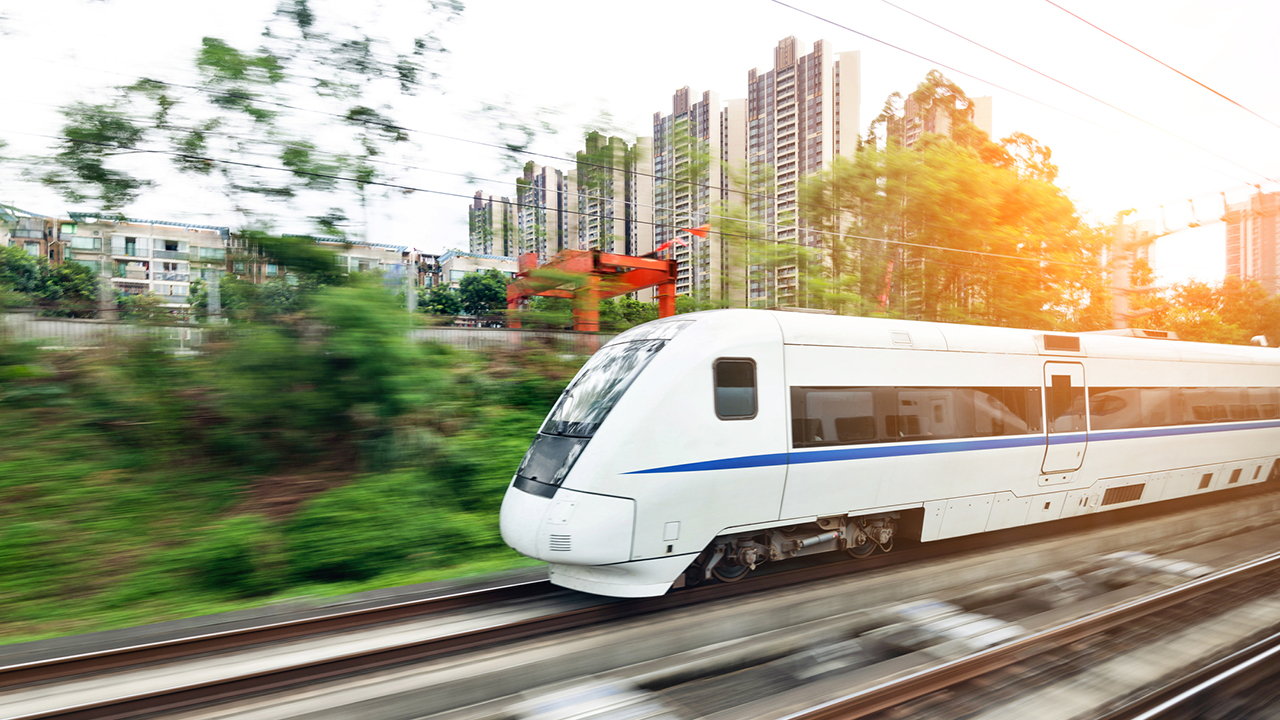Civil engineers have been raising the alarm about the state of public infrastructure for decades. The problems range from nuisance issues like potholes in city streets to catastrophic bridge failures and lead-tainted drinking water. Today, as the economy recovers from the COVID-19 pandemic, government leaders — particularly in the U.S. — are preparing to address these shortcomings with funding equal to the scale of the problem.
The bulk of this investment will take place in cities, both large and small. And we believe
smart cities that include state-of-the-art Internet of Things (IoT) technology in their infrastructure upgrades will be able to deliver the greatest long-term value for their citizens — and the best value for their infrastructure spending dollars.
The reasons for this are many. IoT-based projects enable process automation in infrastructure projects like Intelligent Transportation Systems (ITS). IoT enables data management and insights at the edge of the network, reducing the demand on human and network resources. And IoT devices can go where sending humans is risky or impossible — such as the top of streetlights, the depths of city sewer and wastewater management systems, and even inside the concrete used to build roadways and dams, to ensure the critical integrity of those structures. Read on to learn about some of the ways smart cities are moving forward with smart infrastructure projects.
What Is Infrastructure Spending?

The traditional definition of “infrastructure” refers to long-term assets, particularly facilities and structures involving transportation. But it also includes buildings, communication networks, traffic management systems, and water/wastewater systems that enable cities to function smoothly and serve the daily needs of citizens and businesses.
The
American Society of Civil Engineers (ASCE) (which, by the way, has members in 177 countries) included 18 different categories in its 2021 Report Card on American infrastructure. Those categories ranged from aviation to wastewater and included everything from bridges and broadband to rail, roads and transit. The cumulative grade for the country, sad to say, was a C-. Thus the call for massive investments in all of these categories.
Initial infrastructure spending proposals from the U.S. federal government focus heavily on transportation, with plans to invest $621 billion in roads, bridges and rail. An additional $174 billion would go toward electric vehicle (EV) infrastructure, including a network of 500,000 electric vehicle charging stations as well as electric buses and other vehicles. Especially pertinent to the task of modernizing infrastructure is $100 billion for high-speed broadband networks. The goal here is universal broadband availability, which many observers have compared to the Depression-era
Rural Electrification program. Whatever the final dollar amounts, nearly every major public asset or facility across the country will benefit.
Examples of Infrastructure Spending
Ongoing investments in infrastructure are essential to cities functioning optimally and keeping citizens safe. The bulk of the funding is expected to go to the following:
- Upgrades to roads, bridges and dams
- Traffic management system upgrades
- Improvements to public transit systems
- Smart city lighting updates
- Green technology and sustainability projects
IoT technology can play a key role in smarter, more cost-effective infrastructure projects. So, let’s discuss these key areas where smart cities and other public sector organizations can incorporate IoT into their plans.
Upgrades to Roads, Bridges and Dams

Major civil engineering projects such as
roads,
bridges and
dams fall squarely into the category of “traditional” infrastructure and were all distinct categories in the ASCE Report Card. These assets are built to last for decades or, in some cases, for centuries. IoT is playing an ever increasing role in heavy civil construction not only as useful components of the finished structures, but in the construction process itself.
For example, IoT solutions can provide remote temperature monitoring during the sensitive
concrete curing process, ensuring that concrete achieves its maximum strength and durability.
Fleet monitoring tracks vehicles that carry ready-mix concrete and other critical building materials to help keep deliveries on schedule.
Wearable IoT solutions enhance worker safety in lifting and carrying motions, while
digital signage helps guide motorists around construction zones. Additionally,
fleet management solutions help speed deliveries and increase safety for drivers working on infrastructure projects, as well as reducing costs with predictive maintenance solutions that help keep
heavy machinery and other equipment functioning at peak performance.
Traffic Management System Upgrades
 Traffic management
Traffic management is an area of infrastructure spending where IoT solutions provide enormous daily benefits in safety, convenience and efficiency. IoT solutions are a key part of every modern
Intelligent Transportation System (ITS), performing a variety of traffic management functions, such as enabling traffic lights to respond to congestion in real time to improve traffic flow. They also help improve response times for first responders and provide priority, pre-emptive communications for critical infrastructure in case of public emergencies. This latter capability is a function of the
FirstNet® system, which is currently being deployed across the U.S.
One especially noteworthy and successful project where Digi played a major role was in a traffic system communications upgrade in
New York City, which included the deployment of Digi cellular routers at 14,000 traffic intersections.
In this system, which also included traffic cameras, digital message boards and vehicle detection devices, an intelligent software application operating at NYC DOT’s Traffic Management Center (TMC) accommodates changing traffic patterns and helps ease traffic congestion. It obtains data on vehicle queue depth and movement from various sensors located throughout the city, then adjusts signal timing by coordinating with Advanced Traffic Solid-state Controllers (ASTC) located at each intersection. A key feature of the deployment is a zero-touch configuration capability enabled with cloud-based
Digi Remote Manager®. Digi Remote Manager supported the initial installation and enables technical personnel at NYC DOT to manage devices centrally and deploy firmware updates to the deployed routers virtually, and at lightning speed.
Improvements to Public Transit Systems
 Public transit
Public transit is one of the areas most in need of major infrastructure investment today. In fact, in the
ASCE Report Card, public transit earned a grade of D-. Ouch. But public transit is also one of the areas where IoT can do the most good in helping to improve system efficiency,
citywide mobililty and enhancements to the passenger experience. Today’s buses, railroads and subways can use IoT solutions like
mission critical cellular routers to manage key functions such as fare collection, navigation, engine monitoring and a growing variety of onboard subsystems.
Digital signage, for example, can be used to inform transit passengers with the most current schedule information and provide an ongoing source of revenue with flexible, high-impact advertising.
The introduction of high-speed, low latency
5G infrastructure will further enhance the benefits of IoT solutions in transit. High performance 5G enhances core transit applications such as CAD/ALV, fare collection and passenger Wi-Fi, and will spark new applications over time. It should be noted that reliable failover to 4G makes 5G equipment a smart investment even in areas with limited 5G coverage. In addition, segmented public and private communications enable passengers to enjoy the benefits of 5G connectivity, making for a better experience that helps attract more riders while keeping transit system data segmented and secure.
The move to upgrade transit system communications infrastructure is becoming even more imperative today with the rolling shutdowns of 2G and 3G networks, so infrastructure spending dollars could not come at a better time.
Smart City Lighting Updates

Lighting streets and public spaces can be one of the biggest ongoing expenses for any local government. Smart cities can reduce those expenses by upgrading city lighting with IoT automation. IoT-controlled
intelligent street lighting systems can be used to remotely monitor and manage lighting in ways that help conserve energy and provide lighting more cost effectively, from adjusting lights based on current conditions to employing motion detectors along roads and bicycle paths so that lighting is provided only when and where it’s needed.
With intelligence at the lamp level, outages can be detected almost immediately and maintenance departments can schedule service operations more effectively. IoT solutions can deliver dramatic cost benefits, savings as much as
85% of lighting energy costs.
Green Technology and Sustainability Projects

As cities upgrade their infrastructure, many are taking advantage of the opportunity to adopt greener,
more sustainable practices. After a century of designing transportation networks to accommodate the private automobile, many cities are now retrofitting their infrastructure to enable them to be navigated more easily on foot, by bicycle or on eco-friendly public transit systems.
Sensors, gateways, embedded radios and cellular routers are at the heart of many
green tech and
clean tech projects, such as sustainable city infrastructure and green building systems. The energy that powers and supports these systems — from the power grid to water and wastewater management to traffic, transit and electric vehicle infrastructure — can be upgraded in a manner that helps to lower emissions, improve air quality and reduce a city’s carbon footprint.
IoT Supports Infrastructure Spending Projects
These are just a few of the ways that IoT technology can help smart cities reap the maximum benefits from supcoming infrastructure projects.
Cities, regional agencies and other public sector organizations will all need to collaborate with construction contractors, technology companies, cellular carriers, and other vendors to ensure that they deploy their infrastructure funds wisely and efficiently. At Digi, we have decades of experience working with governmental bodies on a wide variety of infrastructure projects.
Contact us to see how we can help bring the benefits of IoT to your smart city.